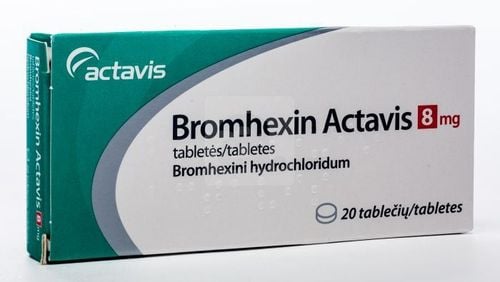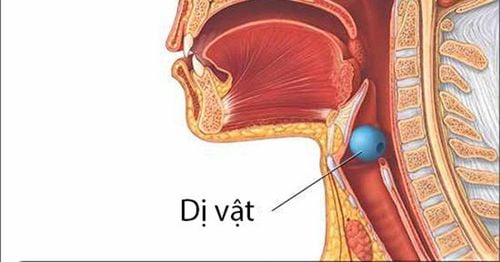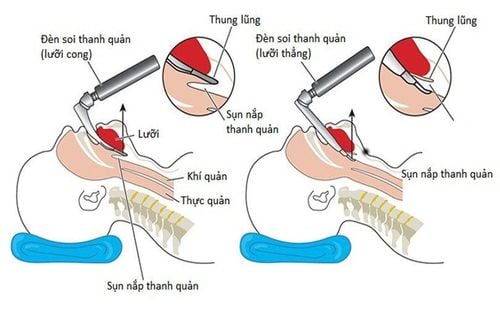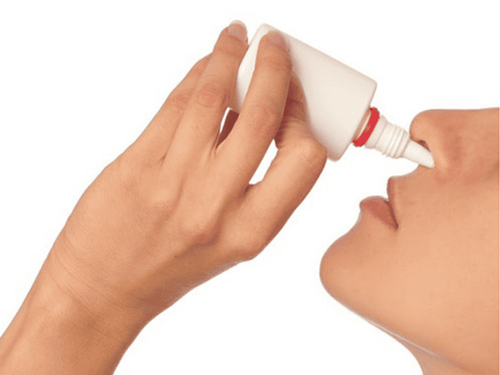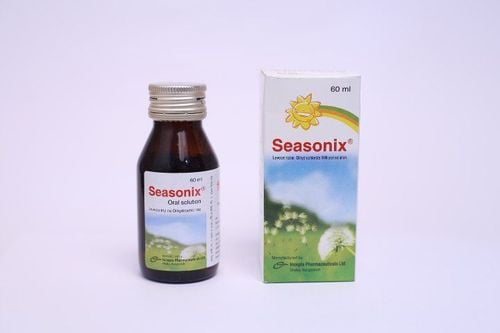This is an automatically translated article.
Articles by Doctor Le Van Quang - Ear - Nose - Throat Doctor - General Surgery Department - Vinmec Nha Trang International General Hospital
Baby swallowing battery if not handled in time will be life-threatening. Even many oral methods of getting batteries stuck in a child's body not only do not work, but on the contrary, make the situation worse. The information in the following article will be useful to you when dealing with a situation where a child swallows a battery.
1. Overview of children swallowing batteries
In this day and age, the widespread and varied use of popular battery-powered electronic devices also increases the risk of accidental battery swallowing in young children. Especially small, flat, or button-shaped batteries. Early management, assessment, and management of these situations is essential before intensive medical interventions can be undertaken.
Fortunately, most (about 97% of cases) usually have only mild symptoms or most do not require medical intervention.
Most batteries pass through the digestive tract without incident. Normally, it is only when a battery becomes trapped in the nasopharynx, pharynx, trachea, esophagus, or gastrointestinal tract that local damage results in ulceration, perforation, or fistula formation. Lesions can be acute or delayed, and long-term sequelae can occur days to weeks later.
Most cases of battery swallowing occur in children under 6 years of age. Another common audience is people older than 60 years old, especially patients with dementia ...
2. Mechanism of injury to children swallowing batteries
Several mechanisms of injury have been proposed including tissue necrosis from local compression, corrosion by leakage of battery material, heavy metal poisoning, and direct discharge.
When the flat battery is placed in an acidic environment such as in the digestive tract, an electrochemical reaction occurs leading to the dissolution of the cathode. This process generates an electric current, leading to electrolysis and liquefaction necrosis.
Battery disc stuck in the stomach, corroding and fragmenting. Erosion and fragmentation occurs in the stomach for more than 48 hours. Approximately 3% of disc batteries were fragmented in the gastrointestinal tract, and 10% showed more severe effects at the sites of gastric mucosal folds.
Serious injuries and sequelae are often caused by battery blockages in the esophagus and pharynx. Lithium batteries often cause more severe damage due to their high capacitance, causing more tissue damage.
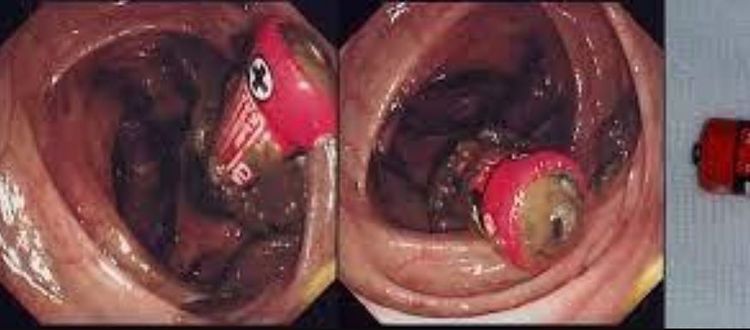
Trẻ nuốt pin có thể bị tổn thương tại thực quản và hầu họng
3. Basic instructions for handling in case of suspected battery swallowing
In case the child swallows the battery, parents absolutely do not induce vomiting such as hooking the throat, giving vomiting drugs... At the same time, parents can give honey to drink immediately and on the way to the hospital during in case of children >12 months and older (because honey is not safe for babies under one year old). Batteries swallowed within the previous 12 hours (because the risk of esophageal perforation is increased after 12 hours).
3.1. How to use honey
Drink 10ml (2 teaspoons) of honey, every 10 minutes, a maximum of 6 doses. Various types of honey can be used, such as commercial or natural honey Note: Honey does NOT replace the immediate removal of a battery stuck in the esophagus. Honey only helps to slow down the development of battery damage to the body.
3.2. Why give honey?
Honey is used to encapsulate the battery and prevent local hydroxide generation. This slows down the process of alkaline burns to adjacent tissues. Efficacy is based on a 2018 study (Anfang et al.) that evaluated the laboratory and experimental protective effects of different esophageal fluids of honey and sucralfate (Carafate®). Both honey and sucralfate (Carafate®) effectively prevent battery-induced pH increases and reduce the depth of esophageal damage.In addition to giving honey, you do NOT give the patient anything to eat until an X-ray is taken to remove the esophageal foreign body. If the patient is asymptomatic, take 5 minutes to check the details of the battery type, size, code/type of the manufacturer, to determine as accurately as possible the specific information of the battery.

Mật ong được sử dụng giúp giảm tổn thương thực quản do trẻ nuốt pin gây ra
Patient has been completely symptom-free since taking the battery. Swallow only 1 battery Do not swallow/eat magnetic materials included Batteries have been reliably determined based on manufacturer code or measurements of an identical cell and <12 mm in diameter. No history of previous esophageal surgery, esophageal stricture/stenosis, motility disturbance or other esophageal disease. Trusted, mentally competent patient (or caregiver) and agrees to report development of symptoms prior to battery use or during the following month if metabolism is not documented and understood the importance of promptly seeking assessment of symptoms that may be associated with battery ingestion. Parents should not use laxatives when babies swallow batteries because they are not effective or polyethylene glycol electrolyte solutions because effectiveness has not been proven and it is not known if the solution enhances electrolytes or not.
Please dial HOTLINE for more information or register for an appointment HERE. Download MyVinmec app to make appointments faster and to manage your bookings easily.
References
Jatana K, Litovitz T, Reilly J, et al. Pediatric button battery injuries: 2013 task force update. Int J Pediatr Otorhinolaryngol 2013; 77:1392–1399. Ruhl D, Cable B, Rieth K. Emergent treatment of button batteries in the esophagus: evolution of management and need for close second-look esophagoscopy. Ann Otol Rhinol Laryngol 2014; 123:206. 3. Gohil G, et al. Accidental button battery ingestion presenting as crop. Laryngol Otol 2014; 128:292–295. Jump C, Anupindi S, Peranteau W, et al. Extensive thoracic injury from button battery ingestion. J Pediatr Gastroenterol Nutr 2016; 62:e24. Simonin M, D'Agostino I, Lebreton M, et al. Bilateral vocal palsy following coin cell lithium battery ingestion: a case report and review. Eur J Pediatrics 2013; 172:991–993. Litovitz T, Whitaker N, Clark L, et al. Emerging battery-ingestion hazard: clinical implications. Pediatrics 2010; 125:1168–1177. && National Capital Poison Center. Button battery ingestion statistics from National Poison Data System. www.poison.org/battery/stats [Accessed 15 June 2017]. The trending of epidemiologic data is assessing the impact and dangers of battery ingestion on a national level. & Kramer R, Lerner D, Lin T, et al. Management of ingested foreign bodies in children: a clinical report of the NASPGHAN Endoscopy Committee' North American Society for Pediatric Gastroenterology, Hepatology, and Nutrition Endoscopy Committee. J Pediatr Gastroenterol Nutr 2015; 60:562–574. The study represents a consensus guideline from experts in the field of endoscopy to aid in the management of patients with battery ingestion. Litovitz T, Whitaker N, Clark L. Preventing battery ingestions: an analysis of 8648 cases. Pediatrics 2010; 125:1178-1183. && Jatana K, Rhoades K, Milkovich S, et al. Basic mechanism of button battery ingestion and novel mitigation strategies after diagnosis and removal. Larryngoscope 2017; 127:1276-1282. This recent animal study injury injury the exact mechanism of mucosal and proposes efforts that may be employed in the future. Lisi, G., Illiceto, M., Romeo, E., Lauriti, G., Faraci, S., Lombardi, G., Dall'Oglio, L. and Chiesa, P. 2018. Esophageal Retained Lithium Battery in Children Younger than 6 Years. Pediatric Emergency Care, Publish Ahead of Print. Sheikh A. Button battery ingestions in children. Pediatr Emerg Care. 1993 Aug;9(4):224-9.




